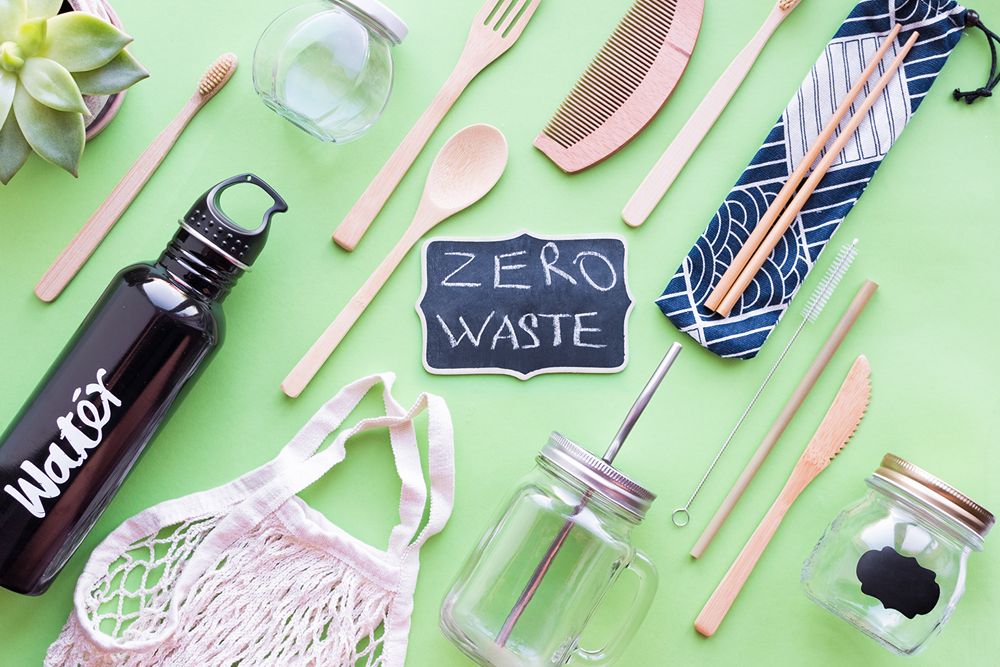Living sustainably doesn’t just help the planet—it helps your wallet too. Many people assume that going green is expensive, but the reality is quite the opposite. Small eco-friendly choices can lead to big financial savings when practiced consistently.
From cutting energy use to reducing waste, here are practical ways to protect your budget and the environment at the same time.
Switch to Reusable Alternatives
Single-use items like paper towels, plastic wrap, and disposable water bottles seem cheap at first, but they add up quickly. Replacing them with reusable versions is one of the simplest ways to save.
Swap paper towels for washable cloths. Use beeswax wraps instead of plastic wrap. Invest in a quality water bottle and a reusable coffee cup. Over time, these switches pay for themselves—and reduce your household waste significantly.
Be Mindful With Water Usage
Water conservation isn’t just good for the planet—it lowers your utility bill too. You can start by taking shorter showers, fixing leaky faucets, and installing water-efficient fixtures.
Run dishwashers and washing machines only with full loads, and consider turning off the tap while brushing your teeth or scrubbing dishes. Outdoors, water your lawn early in the morning or late evening to reduce evaporation.
Even better? Collect rainwater to water plants and gardens when possible.
Embrace Energy Efficiency at Home
Reducing electricity consumption is one of the most effective ways to save money and shrink your carbon footprint. Simple actions like turning off lights when leaving a room, unplugging idle devices, or switching to LED light bulbs can make a noticeable difference.
If you’re ready to go a step further, consider installing smart thermostats and energy-efficient appliances. These upgrades may cost more upfront, but they lead to long-term energy savings and lower utility bills.
Eat Less Meat and More Plants
Meat production consumes vast resources and contributes heavily to greenhouse gas emissions. Reducing your meat intake—especially red meat—can improve your health and lower your grocery bill.
Incorporating more plant-based meals, even a few times a week, significantly cuts food costs. Beans, lentils, rice, oats, and seasonal produce are far cheaper and easier on the environment than meat-heavy meals.
Try “Meatless Mondays” as a starting point.
Shop Secondhand Before Buying New
Thrift stores, consignment shops, and online marketplaces are great places to find clothes, furniture, books, and household goods at a fraction of retail prices.
Buying secondhand keeps items out of landfills and reduces the demand for new production, which often consumes energy and raw materials. It’s also a smart way to stay within budget—especially for fast-growing children, seasonal decor, or temporary needs.
Before buying anything new, ask yourself: Can I find this used?
Limit Car Use and Try Alternative Transportation
Gas, insurance, maintenance, and parking make car ownership expensive. Whenever possible, choose greener transportation options: walk, bike, carpool, or use public transit.
If you live in a bike-friendly or transit-connected area, you might even find that a car isn’t necessary at all. For long commutes, try combining errands into one trip or working from home when possible to reduce fuel consumption.
Driving less helps the environment—and your gas bill.
Create a No-Waste Kitchen
Food waste is both a financial and environmental issue. Americans waste billions of pounds of food every year, much of it perfectly edible.
To avoid this:
-
Plan meals before grocery shopping
-
Store produce properly to extend its life
-
Use leftovers creatively
-
Freeze food before it spoils
-
Compost food scraps for gardening use
Reducing food waste means buying less and making the most of what you already have.
Use Natural Cleaning Products
Store-bought cleaning products can be pricey—and many contain harsh chemicals that are harmful to the environment and your health. Making your own cleaners using vinegar, baking soda, lemon, and essential oils is cost-effective and eco-friendly.
You don’t need a different cleaner for every surface in your home. A simple vinegar-and-water mix can handle windows, countertops, and more. Baking soda works wonders on tough stains and odors.
One bottle of vinegar costs less than a single branded spray cleaner—and lasts far longer.
Choose Quality Over Quantity
Buying fewer, better-quality items that last is often more economical than constantly replacing cheaper, low-quality versions. This applies to clothing, kitchenware, electronics, and even furniture.
Adopt a “buy it once” mindset. Durable items may cost more upfront, but they save you from needing frequent replacements and reduce long-term waste.
It’s not just smart—it’s sustainable.
Dry Clothes Naturally
Clothes dryers consume a lot of energy. Whenever the weather permits, consider air-drying your clothes on a drying rack or clothesline. It’s gentler on fabrics, reduces your electricity usage, and can save hundreds each year in energy costs.
If you must use a dryer, clean the lint trap regularly and dry full loads to maximize efficiency.
A little sunlight can go a long way.
Replace Chemical Lawn Care With Organic Practices
Traditional lawn care products often contain chemicals that harm local ecosystems and water supplies. They’re also expensive and usually overused.
Try natural landscaping methods:
-
Plant native species that require less water
-
Use compost instead of synthetic fertilizers
-
Mow less often and leave clippings to nourish your lawn
-
Hand-pull weeds or use natural deterrents
These methods not only save money but create healthier yards that support local wildlife and pollinators.
Buy in Bulk and Avoid Excess Packaging
Bulk shopping reduces the cost per unit and cuts down on packaging waste. Non-perishable staples like rice, pasta, oats, beans, and flour are great bulk buys.
Bring reusable bags or containers when shopping at bulk stores. Avoid individually wrapped items when possible, as these often carry a higher price for the sake of convenience.
The more you buy wisely, the less you throw away.
Use Less Paper—And Go Digital
Paper towels, napkins, disposable plates, and junk mail all add up in cost and waste. Transition to cloth napkins, real dishware, and digital bills to save money and reduce your carbon footprint.
Set up e-billing with service providers and unsubscribe from physical catalogs or mailing lists you don’t need.
Digital systems reduce clutter and help the planet.
Saving money and saving the planet aren’t mutually exclusive. In fact, the more you adopt eco-friendly habits, the more you’ll notice your household costs going down.
Sustainability starts with simple, everyday decisions. Whether it’s using less energy, wasting less food, or saying no to single-use plastic, your choices add up. You don’t have to be perfect—just intentional.
With a little effort, you can build a lifestyle that’s both eco-conscious and budget-friendly.


